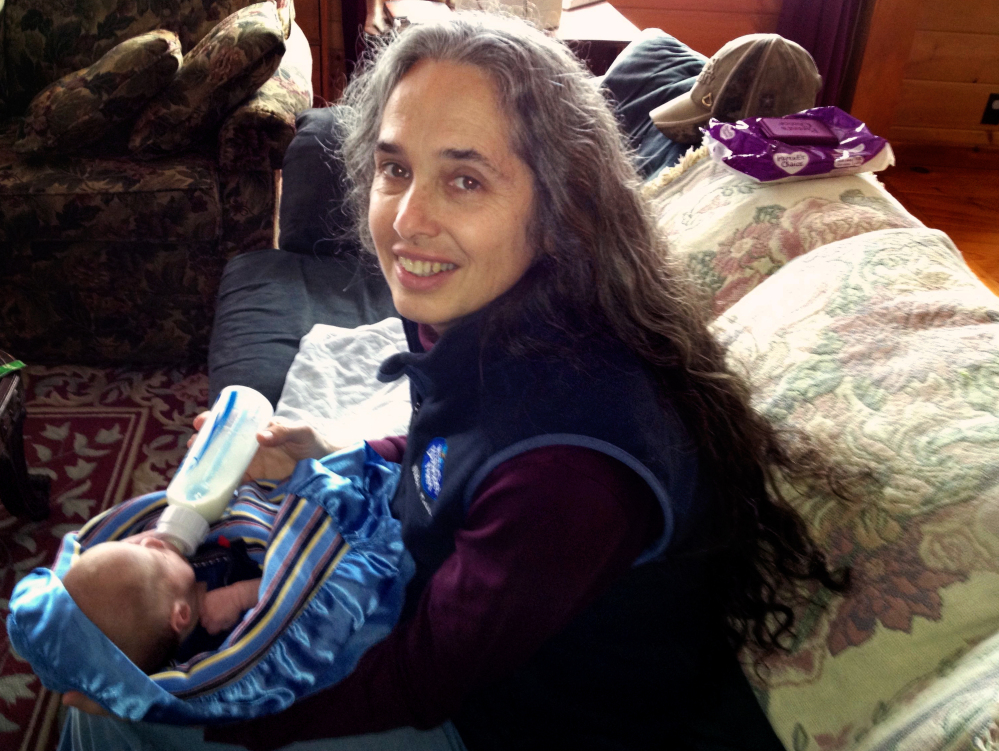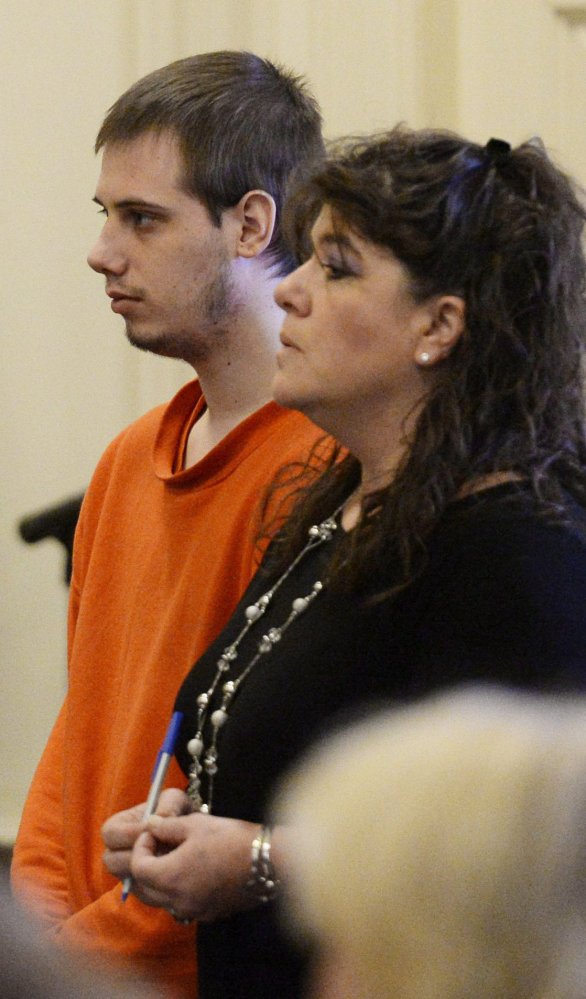BUTTE, Montana — At least 786 children died of abuse or neglect in the U.S. in a six-year span in plain view of child protection authorities – many of them beaten, starved or left alone to drown while agencies had good reason to know they were in danger, The Associated Press has found.
To determine that number, the AP canvassed the 50 states, the District of Columbia and branches of the military – circumventing a system that does a terrible job of accounting for child deaths. Many states struggled to provide numbers. Secrecy often prevailed.
Most of the 786 children whose cases were compiled by the AP were under the age of 4. They lost their lives even as authorities were investigating their families or providing some form of protective services because of previous instances of neglect or violence or other troubles.
Take Mattisyn Blaz, a 2-month-old Montana girl who died when her father spiked her “like a football,” in the words of a prosecutor.
Matthew Blaz was well-known to child services personnel and police. Just two weeks after Mattisyn was born on June 25, 2013, he came home drunk, grabbed his wife by her hair and threw her to the kitchen floor while she clung to the newborn.
Jennifer Blaz said a child protective services worker visited the day after her husband’s attack, spoke with her briefly and left. Her husband pleaded guilty to assault and was ordered by a judge to take anger management classes and stay away from his wife. Convinced he had changed, his wife allowed him to return to the home.
She said the next official contact between the family and Montana child services came more than six weeks later – the day of Mattisyn’s funeral.
MAINE ABUSER REPORTED
The system also failed Ethan Henderson, who was only 10 weeks old but already had been treated for a broken arm when his father hurled him into a recliner so hard that it caused a fatal brain injury.
Maine hotline workers had received at least 13 calls warning that Ethan or his siblings were suffering abuse. The caseworker who inspected the family’s cramped trailer six days before Ethan died on May 8, 2012, wrote that the baby appeared “well cared for and safe in the care of his parents.”
The case of Ethan presents a particularly telling example of a repeated systemic failure.
Only two of those calls were investigated – one involving Ethan and his twin brother, and the other, their sister. In addition, more than a half-dozen physicians, nurses and other caregivers failed to report signs that the blue-eyed boy was being terribly hurt. Some have escaped scrutiny and punishment to this day.
Maine child welfare officials said the state’s confidentiality law prohibited them from discussing details about their involvement in Ethan’s case. Records obtained by AP, however, suggest the state missed numerous opportunities to properly assess the safety of Ethan and his siblings, neglecting to follow up promptly even after identifying warning signs.
According to evidence produced as part of the criminal case against Ethan’s father, Gordon Collins-Faunce, the police made two of those calls but hotline workers decided that neither merited a response.
Ethan’s grandmother, Jan Collins, said she called the hotline just before the twins were born because she feared her son and another man who frequented the family’s mobile home could hurt the children.
“I said I thought Gordon was delusional. They just dismissed that,” she said.
The twins were born a few weeks premature on Feb. 21, 2012 – and just four weeks later, Ethan’s mother took him to a nearby hospital with a broken left arm. She told his pediatrician that Ethan’s father had accidentally twisted it lifting the baby from his crib. The doctor never reported the injury, even though Maine law requires physicians to immediately report possible child abuse.
About a month later, Ethan arrived at daycare unable to move his neck and with dark bruises on his right arm. Workers took photos of the bruises, but never reported them. The next week, Ethan arrived at daycare with such a high fever that workers called his mother to take him to the hospital, evidence shows.
FAMILY FRIEND INTERVENES
When Ethan was nearly 10 weeks old, a family friend finally called the hotline to report bruises on the twins and a white, blistering burn on their sister’s hand. Edstrom said the friend decided to tell hotline workers she was a daycare volunteer so that they would take the report seriously. That represented the second report worthy of investigation.
Melissa Guillerault, the child welfare agency worker dispatched to the gray double-wide trailer on May 2, called ahead to let the family know she was coming. Still, she found Collins-Faunce and his wife had five bags of trash on the porch.
Though the state later acknowledged Guillerault learned of Ethan’s earlier broken arm during that visit, records show she found the couple to be “cooperative and engaging.” She said the children “appeared clean, healthy and comfortable,” although she didn’t inspect them for bruises. She reported no signs of danger.
Three days later, according to Collins-Faunce’s confession to police, he grew so frustrated by Ethan’s cries that he picked up his son by the head and threw him into a chair, causing severe brain damage. Before calling 911, evidence shows he went outside to smoke and play the video game “Police Pursuit.”
Ethan died three days later, on May 8, 2012. His father was convicted of manslaughter last year; his siblings were placed in foster care and adopted.
Virginia McNamara, a pediatric nurse who visited Ethan at his home and never reported the signs of possible abuse, lost her license to practice in Maine. Ethan’s pediatrician, Dr. Lisa Gouldsbrough, was never disciplined, although she received a letter of guidance from the Maine board that licenses osteopathic doctors aimed at helping her “in avoiding complaints of this nature in the future.” Guillerault was promoted to a supervisory role within the department.
None of them responded to AP’s requests for comment, and neither did the Maine Department of Health and Human Services.
The records that spell out the state’s involvement with the family remain secret.
Many factors can contribute to the abuse dilemma nationwide: The child protective services system is plagued with worker shortages and a serious overload of cases. Budgets are tight, and nearly 40 percent of the 3 million child abuse and neglect complaints made annually to child protective services hotlines are “screened out” and never investigated.
Also, insufficient training for those who answer child abuse hotlines leads to reports being misclassified, sometimes with deadly consequences; a lack of a comprehensive national child welfare database allows some abusers to avoid detection by moving to different states; and a policy that promotes keeping families intact can play a major role in the number of deaths.
The number of abuse and neglect fatalities where a prior open case existed at the time of death is undoubtedly much higher than the tally of 760.
Seven states reported a total of 230 open-case child deaths over the six years, but those were not included in the AP count because the states could not make a distinction between investigations started due to the incident that ultimately led to a child’s death and cases that already were open when the child received the fatal injury.
FLAWED DATA COLLECTION
The data collection system on child deaths is so flawed that no one can even say with accuracy how many children overall die from abuse or neglect every year. The federal government estimates an average of about 1,650 deaths annually in recent years; many believe the actual number is twice as high.
Even more lacking is comprehensive, publicly available data about the number of children dying while the subject of an open case or receiving assistance from the agencies that exist to keep them safe – the focus of AP’s reporting.
“We all agree that we cannot solve a problem this complex until we agree it exists,” said David Sanders, chairman of the federal Commission to Eliminate Child Abuse and Neglect Fatalities, whose members are traveling the country studying child deaths under a congressional mandate.
States submit information on child abuse deaths to the federal government on a voluntary basis – some of it comprehensive, some of it inaccurate. In some cases, states withhold information about child deaths in violation of the terms of federal grants they receive.
The U.S Department of Health and Human Services says all states receiving grants under a prevention and treatment program must “allow the public to access information when child abuse or neglect results in a child fatality,” unless those details would put children, their families or those who report child abuse at risk, or jeopardize an investigation.
Still, no state has ever been found in violation of disclosure requirements and federal grants have never been withheld, according to the Office on Child Abuse and Neglect, a sub-agency of HHS.
The information that states send the federal government through the voluntary system also is severely lacking.
A 2013 report showed that 17 states did not provide the federal government with a key measure of performance: how many children had died of child abuse after being removed from their homes and then reunited with their families within five years.
When President Richard Nixon signed the Child Abuse Prevention and Treatment Act into law in 1974, it was seen as a sign of federal commitment to preventing child abuse through state-level monitoring.
But in 1995, a board reviewing the subsequent progress issued a scathing report calling or better information and transparency and flagging “serious gaps in data collection.”
Copy the Story LinkSend questions/comments to the editors.




Success. Please wait for the page to reload. If the page does not reload within 5 seconds, please refresh the page.
Enter your email and password to access comments.
Hi, to comment on stories you must . This profile is in addition to your subscription and website login.
Already have a commenting profile? .
Invalid username/password.
Please check your email to confirm and complete your registration.
Only subscribers are eligible to post comments. Please subscribe or login first for digital access. Here’s why.
Use the form below to reset your password. When you've submitted your account email, we will send an email with a reset code.